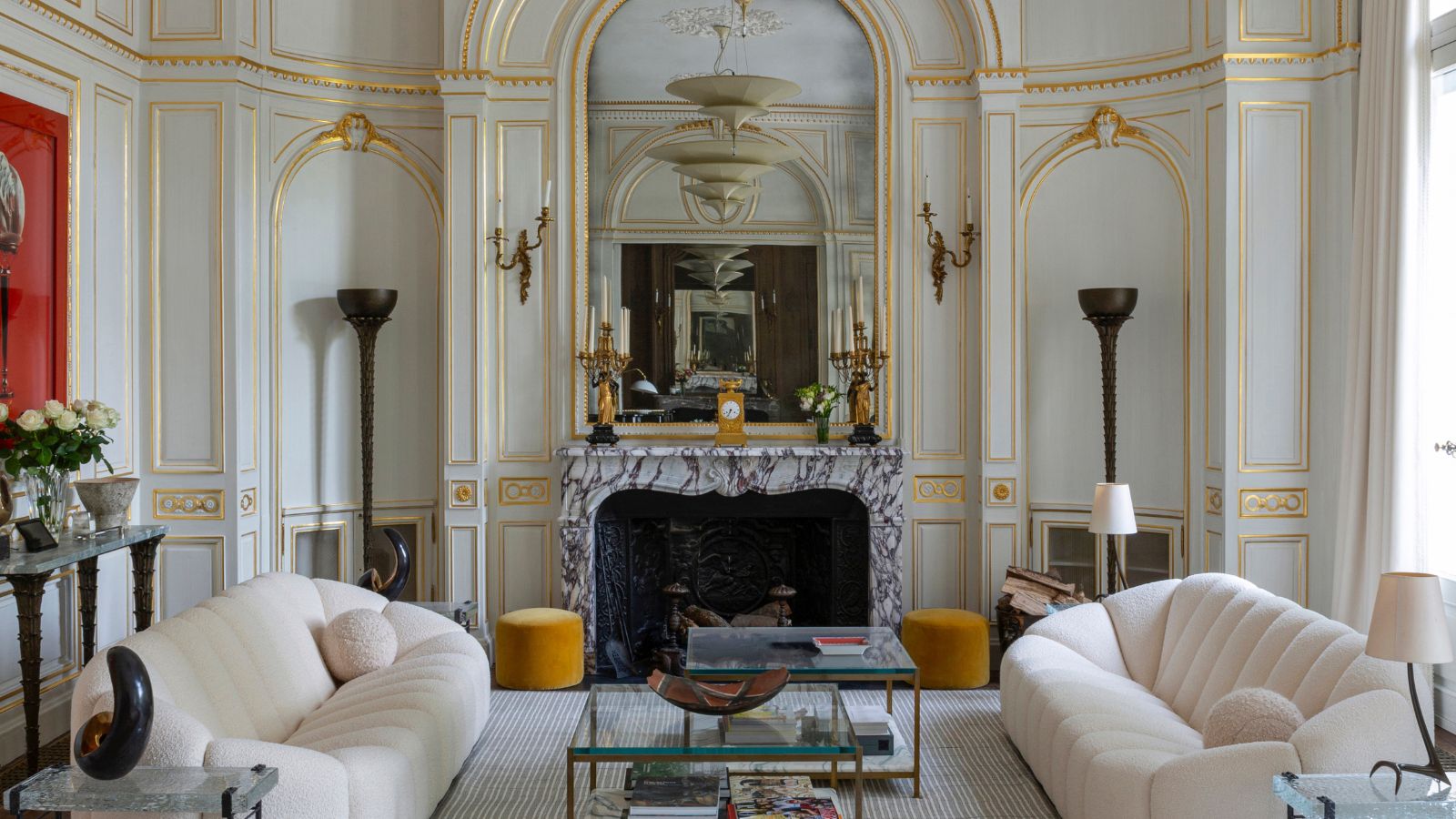
The living rooms Poirot solved his cases in. The Great Gatsby. The gilded dining room of London's Claridge's Hotel. All of these are examples of Art Deco interior design, and all of them have an enduring appeal, a gleaming glamour full of slender silhouettes, and gilt finishes. This year marks the centenary of the International Exhibition of Modern Decorative and Industrial Arts in Paris, an influential expo held in 1925 that ran for seven months and is credited with influencing global style towards the more decorative. But even a century later, Art Deco interior design is still as relevant to décor today; its rules, tenets, and ideas informing many of the designers we regularly feature in Livingetc.
"Our references can be classical, based in aesthetics like Art Deco, but pared back a little for today," explains interior designer Bryan O'Sullivan (who has designed spaces at Claridge's). One of his greatest inspirations has been Jean Michel Frank, a key figure of the Art Deco interior design movement, prominent in the 1920s. "We designed a sofa based on a Jean Michel Frank one," he adds. "It was rectilinear, had a wonderful depth, and felt very elegant. You could sit back on it properly, it was filled with foam, but it didn't look messy."
And that's part of the continuing appeal of Art Deco interior design today. This interior design style was characterized by upscale, grand, and shimmeringly chic pieces that also happened to be comfortable, enticing, and ready for a party at a moment's notice. It's an aesthetic that fits very well with today's convivial take on interiors. So, to properly understand how to create homes that feel right for now, it's important to look back at the best parts of the Art Deco interior design movement, and how we continue to be informed by it today. Here's what you should know.
Why Is Art Deco Interior Design Still Relevant Today?
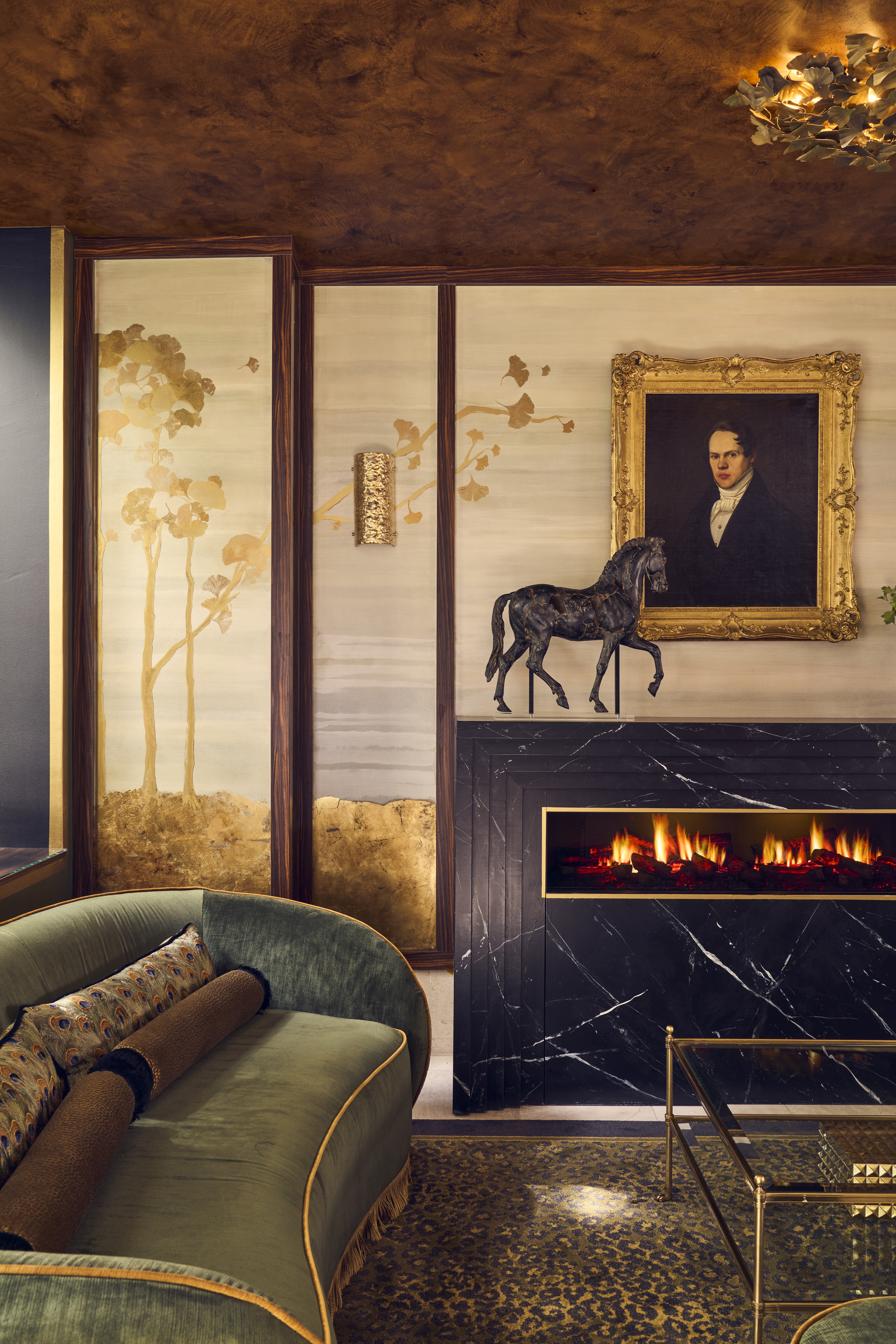
Motifs, edges, and shapes from the Art Deco interior design movement still appear regularly in décor today. "The Art Deco interior design movement was about reducing things to their existential forms, playing with them, and designing along very square lines or very circular edges," explains designer Scott Maddux, one half of studio, Maddux Creative. "Because of that it feels very glamorous."
LA-based interior designer Jake Arnold says he is particularly inspired by the Hollywood Regency aesthetic, a style that shares many similarities with Art Deco interior design. "For me, Art Deco is timeless because it's about craftsmanship and silhouettes...," he explains. "I love the hexagonal shapes, and the sense of polish that came from that era."
What Are the Characteristics of Art Deco Interior Design?
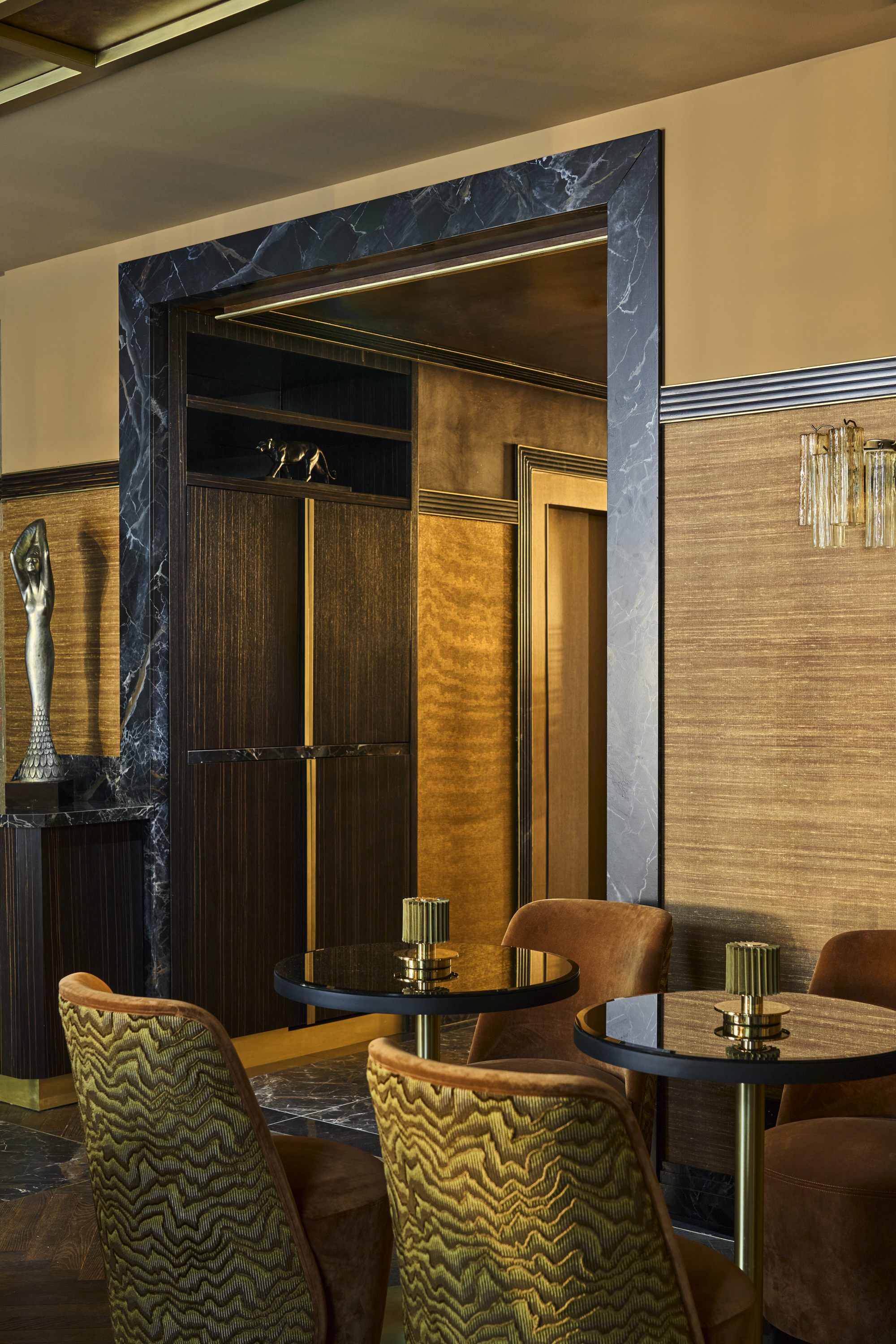
"An Art Deco room is characterized by refined restraint," says Jena Quinn, co-founder of Studio QD. "In an Art Deco room, everything has been considered as a cohesive whole, the materials selected to work as an amalgamation, not to have one standout piece."
"Every aspect has been considered from a functional point of view, and there is sumptuousness and human-crafted element to every piece," she continues. "The forms have a simplicity, lighting is plentiful and decorative, there are geometric shapes, and antiqued brass, and bronze finishes."
We often associate Art Deco interior design as being grand, but Jena's design partner Lucy Derbyshire adds that pieces these spaces are picked more for their functionality, and it's the trimmings that make the room seem so opulent. "Wall paneling, luxe fabrics, and lacquer all make it feel luxurious," she says.
What Colors Are Associated with Art Deco Interior Design?
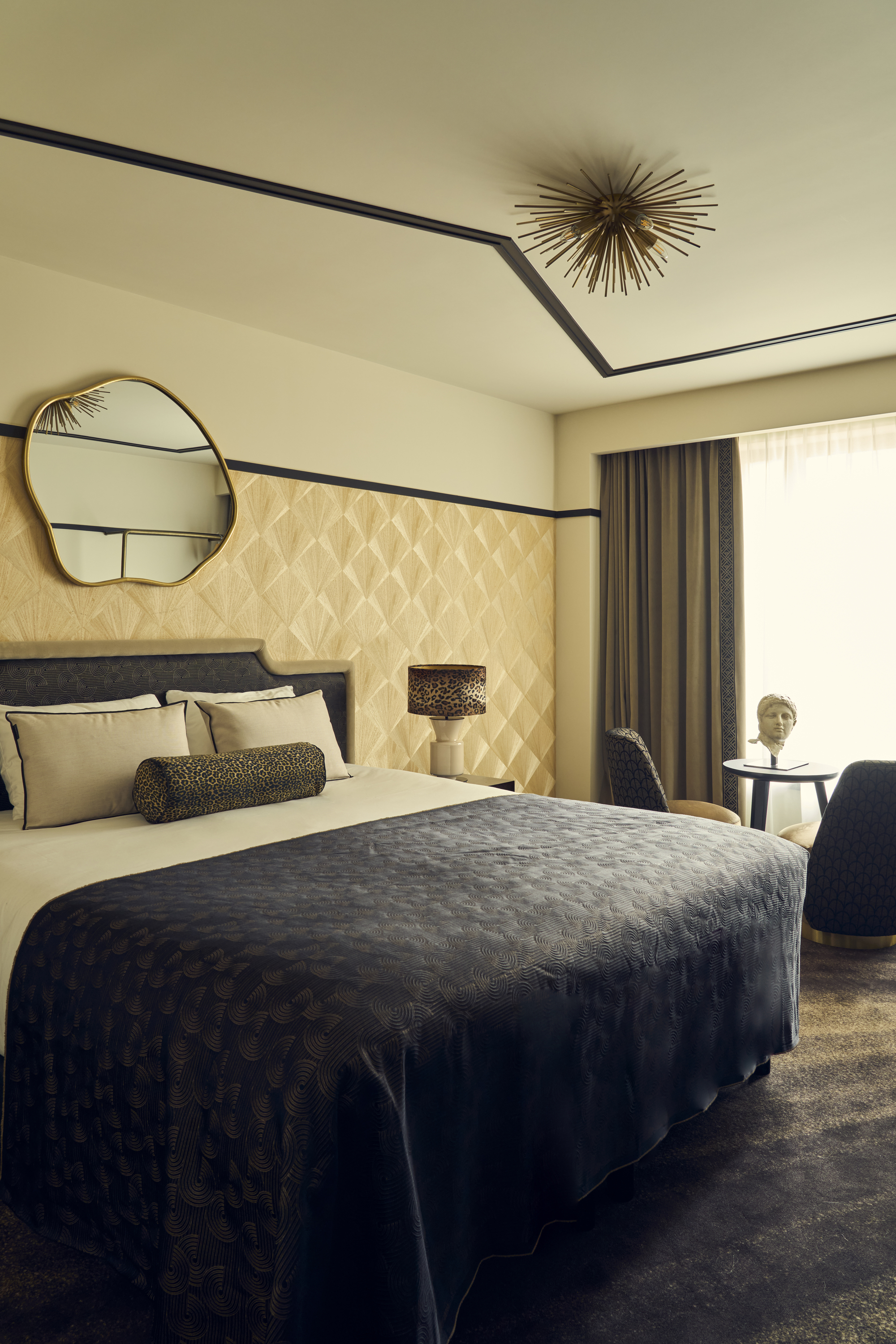
"Art Deco interior design is always about sumptuous and rich tones," says Lucy Derbyshire. "And lots of beige and white, especially with black," adds Jena Quinn, noting that olive green is also a key shade.
And because of the regular use of reflective surfaces, you're really able to play with strength of color, adds Lucy. "Those golden hues all bounce around the room, gleaming off of exotic woods in a very opulent way."
Because of that, backdrops tend to be more muted. "The color itself came from the artworks," explains Jena. "The artists who were big at the time — like Salvador Dali and Alberto Giacometti — actually collaborated with many of the famous Art Deco designers, so their vibrancy and use of color is infused into the aesthetic of the time, bringing literal artistry into interiors."
What Are the Inspirations Behind Art Deco Interior Design?
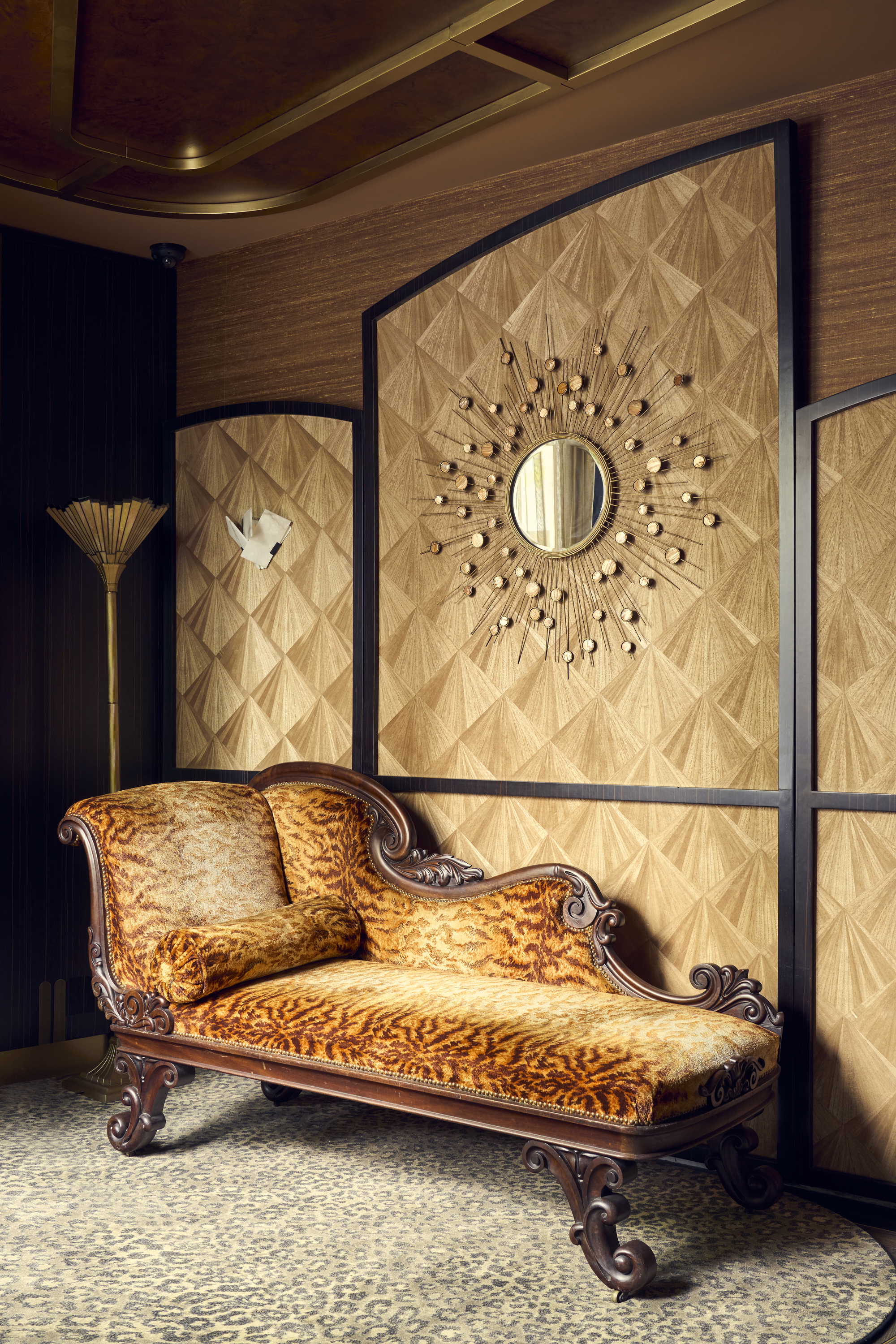
The 1920s were a particularly fast paced, turbulent, and ever-shifting time. "There was a lot of youthful exuberance around this time," says Jena. "People had lived through World War I and the 1918 Spanish Pandemic, and so much had been destroyed. People wanted change, and there was optimism for a new future. And also, before the crash and Great Depression, there was a lot of money."
"The cocktail had just been invented," Lucy Derbyshire adds. "F. Scott Fitzgerald helped to invent a lifestyle of 'Drink, Party, Live,' which informed how people wanted to feel and how they wanted their homes to look." And, of course, sharper, more elegant, and more refined spaces were needed as the backdrop to this new way of life.
"And don't forget that Tutankhamen's tomb was discovered in 1922," Jena adds. "Which explains the interest in gilt, lapis, and the repetitive motifs."
These were all key themes and influences for Art Deco interior design.
What Has Been Inspired by Art Deco Interior Design?
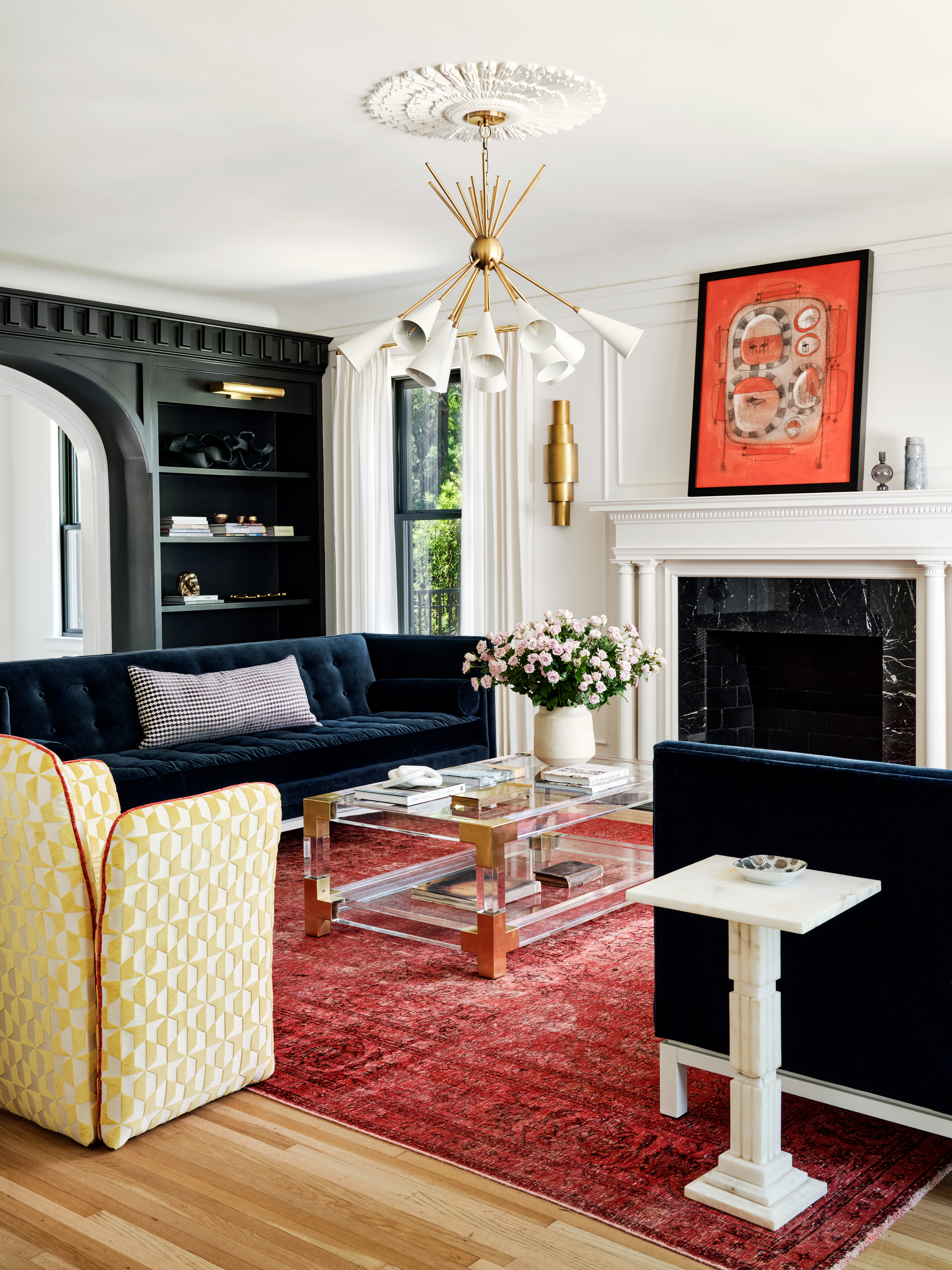
Hollywood Regency, a style that is still cited today by designers like Jake Arnold, was inspired by the Art Deco design movement. "The Hollywood film industry was one of the key ways that the word of Art Deco was spread," says Jena. "The first globalized aesthetic. Cedric Gibbons was a famed set designer at the time and, having visited the 1925 exhibition in Paris, spread the word in his films."
"But of course, Hollywood being Hollywood, they took the look further, exaggerated it, embraced whiter whites and bigger scales," adds Lucy. "And so Hollywood Regency was born — still with the same tenets of scale and symmetry and repetition, but bigger. So, Hollywood Regency and Art Deco are totally interconnected."
What Is the Difference Between Art Deco and Art Nouveau?
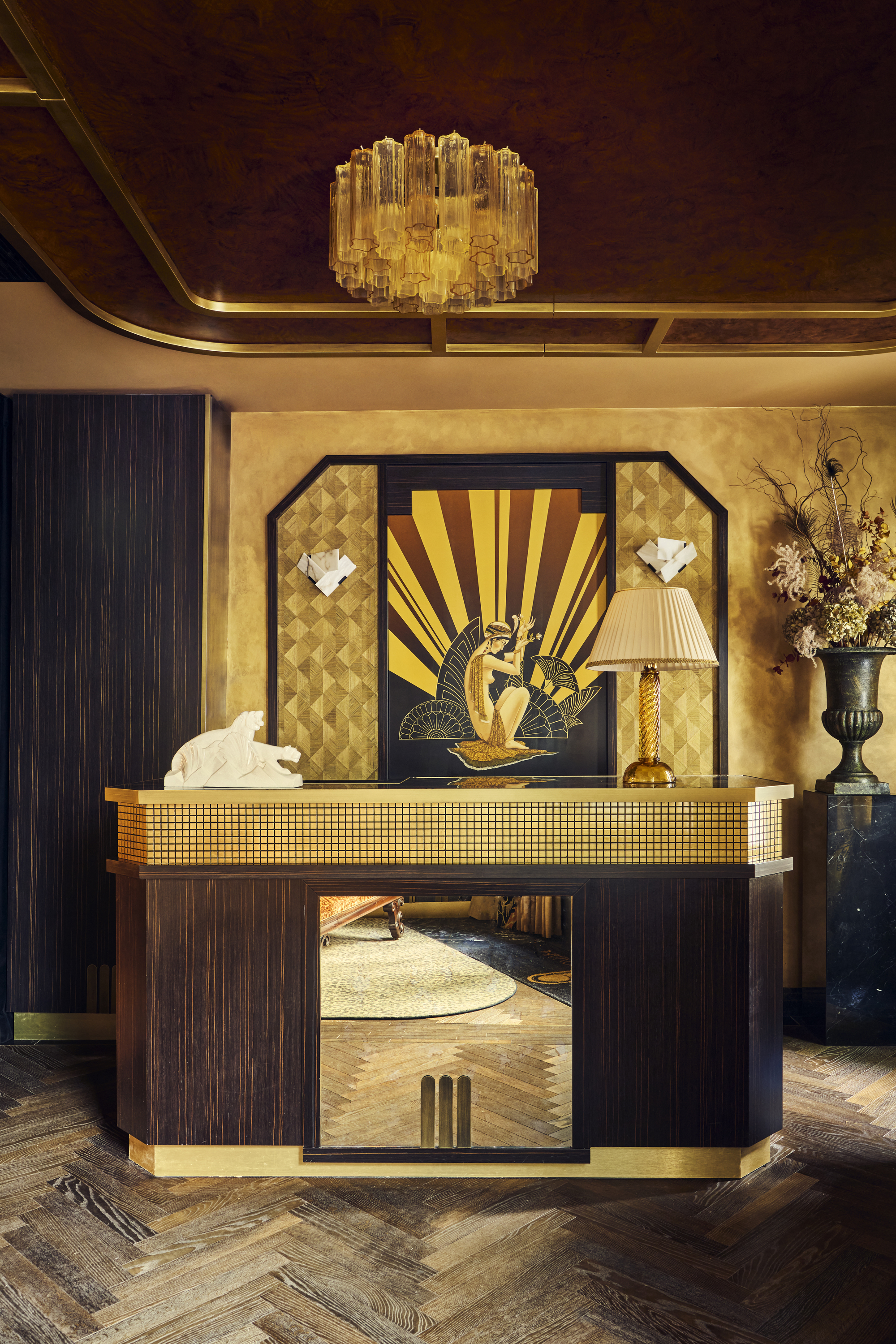
Art Nouveau was the key style from the 1880s up until World War I, and there are definitely some similarities to be drawn between it and Art Deco interior design.
"But Art Nouveau was more organic, focussed more on curves and natural shapes and forms," says Lucy. "When Art Deco came along, they were embracing new technology that was suddenly available, creating shapes that were more aerodynamic and large and about human — or machine — craft, rather than reflecting nature."
Art Nouveau also centered around geometry, but there are more flourishes than there are in Art Deco, more curlicues and less straight lines.
How Has Art Deco Interior Design Evolved?
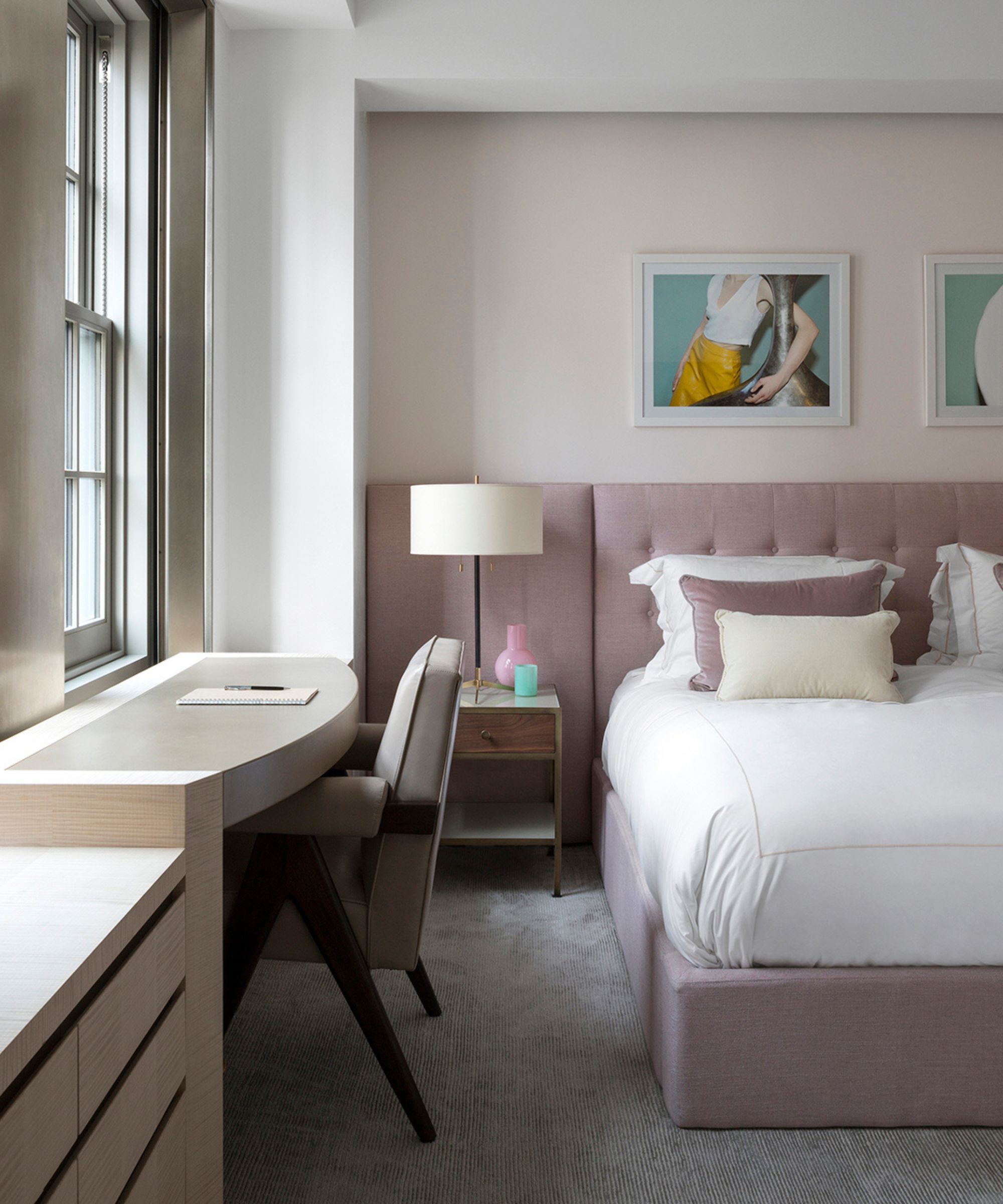
Squint, and you can definitely still see the Art Deco interior design influences in this contemporary bedroom by Bryan O'Sullivan (shown above). They're in the slim stem of the lamp, the plush fabrics on the bed and chair, the gentle roundness of the desk.
While many of its tenets are relevant to design today, Art Deco interior design has definitely evolved — perhaps even relaxed a little — in the last 100 years.
"It's interesting to see how designers have transitioned ideas from the period," Jake Arnold says. "Things tend to be bit more petite now opposed to back then, surfaces a bit less polished, but the elegant forms and outlines have remained."
Price: £14.05
Jena and Lucy run the successful London design agency Studio QD, and also write beautiful and well-researched design books. Their latest explains the history of the Art Deco movement and — filled with beautiful imagery — shows why and how it's relevant today.







